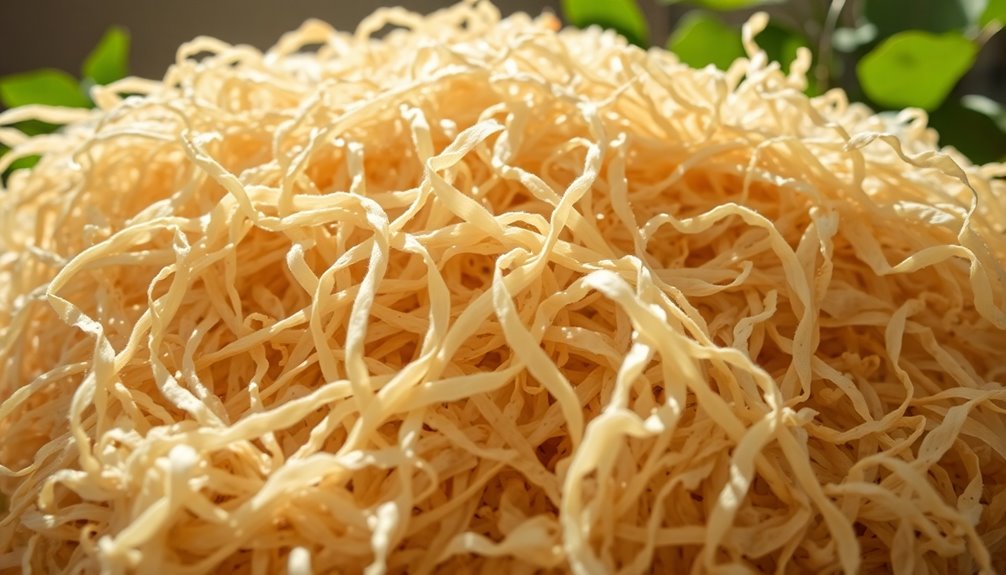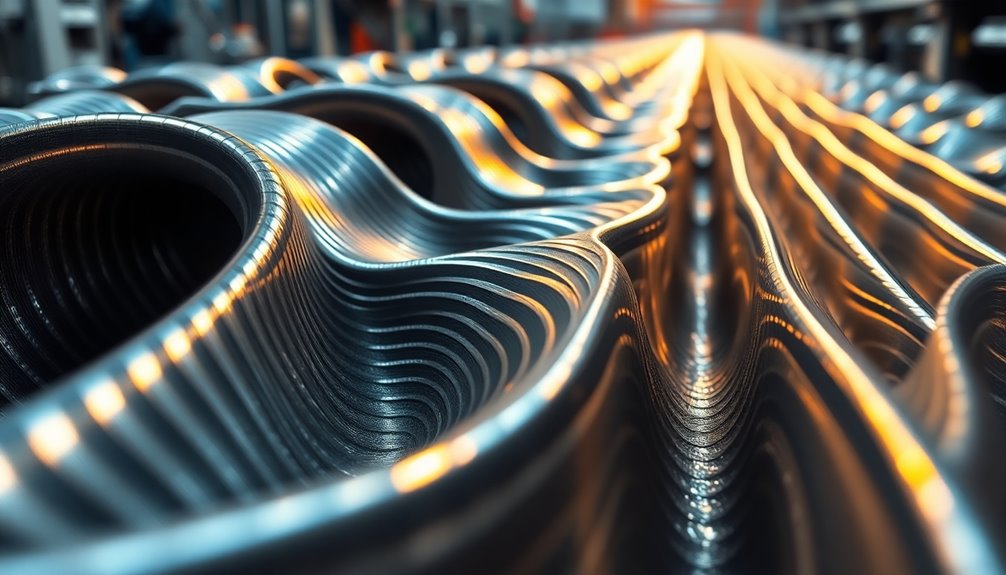Paper's mainly made of cellulose fibers that come from sources like wood, cotton, flax, and hemp. You'll find these fibers in both softwoods like spruce and hardwoods such as birch. The average fiber length is just over one millimeter, which helps create strong bonds. Depending on the production method, paper can vary in durability and brightness, with chemical pulping generally yielding stronger paper. Recycled fibers also play a big role, contributing to sustainability. This gives you a peek into the materials behind paper—stick around to uncover more about its production and innovations!
Key Takeaways
- Paper is primarily composed of cellulose fibers derived from wood, cotton, flax, and jute.
- Major sources of cellulose include softwoods like spruce and pine, and hardwoods like birch and eucalyptus.
- Cellulose fibers constitute about 40-50% of paper, providing tensile strength and durability.
- Alternative fibers such as hemp and bamboo are increasingly used for sustainable paper production.
- Recycled fibers from pre-consumer and post-consumer waste contribute to the sustainability of paper materials.
Overview of Paper Materials

When you think about what paper is made of, it's primarily cellulose fibers sourced from wood. The major sources include softwoods like spruce and pine, as well as hardwoods like birch and eucalyptus. These cellulose fibers are the building blocks of paper manufacturing, giving it strength and durability.
In addition to traditional wood sources, alternative fiber sources are becoming increasingly popular. Materials like cotton, flax, and jute contribute to specialty papers known for their unique characteristics. These specialty papers can offer enhanced durability and are often used in high-quality applications.
The thickness of paper, or caliper, typically ranges from 0.07 to 0.18 millimeters, which affects its usability for different tasks. Paper weight, measured by ream weight for 500 sheets, generally falls between 20lb and 32lb for standard printing paper.
Recycled fibers, both pre-consumer and post-consumer waste, play a vital role in modern paper production. They enhance sustainability efforts and greatly reduce environmental impact, making recycled options an important consideration in today's paper manufacturing landscape.
Understanding these materials helps you appreciate the complexity behind every sheet of paper you use.
Types of Fibers Used
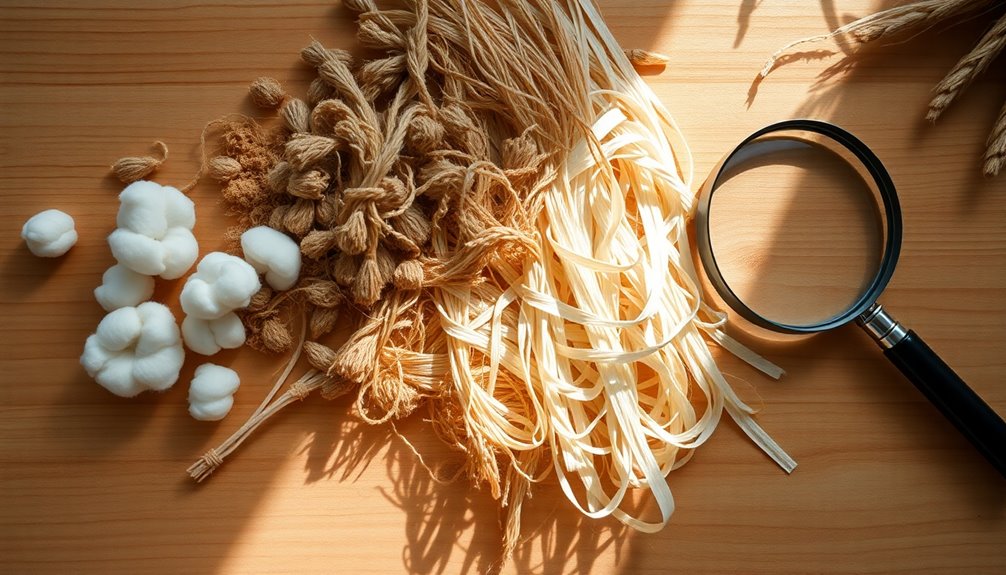
There are several types of fibers used in paper production, each contributing unique qualities to the final product. The primary material is cellulose fibers, derived from various sources including wood, cotton, flax, and jute. Softwood trees, like spruce and pine, are commonly chosen for their longer fibers, enhancing strength and durability in the paper.
Cotton fibers stand out for their strength and premium quality, making them ideal for archival documents and high-quality stationery, which often comes at a higher market price.
Additionally, alternative natural fibers like hemp and bamboo are gaining popularity in specialty papers due to their unique properties and sustainability benefits.
Recycled fibers also play a significant role in modern paper production. Sourced from pre-consumer and post-consumer waste, these fibers help reduce the demand for virgin materials, promoting sustainability in the industry.
By incorporating both new and recycled cellulose fibers, paper makers can create a diverse range of products that cater to various needs while being mindful of environmental impact.
Understanding these fiber types can help you appreciate the complexity and craftsmanship behind your everyday paper products.
Production Methods Explained
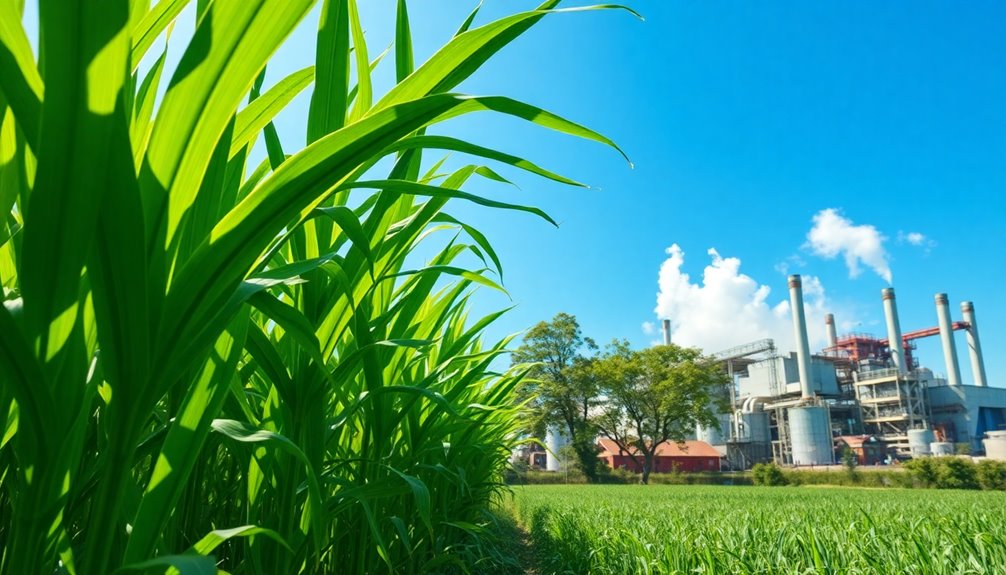
When it comes to paper production, understanding the pulping techniques is essential.
You'll find that different fiber sources, like softwood and recycled materials, play significant roles in determining the quality and sustainability of the final product.
Let's break down these methods and compare the various fiber sources used in the industry.
Pulping Techniques Overview
How do different pulping techniques impact the quality of paper you use every day? Understanding the pulping process is key.
There are two main methods: mechanical pulping and chemical pulping. Mechanical pulping physically grinds wood chips to separate cellulose fibres, producing a higher yield of pulp. However, this method retains lignin, resulting in darker paper, which is often used for lower-cost products like newsprint.
On the other hand, chemical pulping, particularly the kraft process, uses chemical solutions—like sodium hydroxide and sodium sulfide—to break down lignin and extract cellulose fibres. This results in a brighter, smoother product, making it ideal for applications requiring durability.
While mechanical pulps generate less waste and are more cost-effective, they come at the expense of strength.
Each pulping technique affects the properties of the paper you encounter daily. Chemical pulps are stronger and more suitable for high-quality products, while mechanical pulps serve well in cost-sensitive markets.
Fiber Sources Comparison
Often, the choice of fiber source greatly affects the quality and characteristics of the paper you use. Paper is primarily made from cellulose fibers, with wood being the most common source due to its abundance and fiber quality.
When it comes to production processes, two main methods stand out: mechanical pulping and chemical pulping.
Mechanical pulping involves grinding wood chips to separate fibers while retaining lignin. This method yields more pulp but results in lower strength paper. In contrast, chemical pulping uses chemicals like sodium hydroxide to break down lignin, producing higher quality and brighter wood pulp. This process typically creates stronger and more versatile paper products.
Sustainability plays a significant role in today's paper industry. Recycled fibers from both pre-consumer and post-consumer sources are increasingly incorporated into production, helping to reduce the reliance on virgin materials.
Different tree species also contribute to specific paper qualities—hardwoods are often used for fine papers, while softwoods provide long fibers that enhance strength in products like newsprint and containerboard.
Ultimately, understanding these fiber sources can guide you in choosing the best paper for your needs.
Chemical vs. Mechanical Pulping
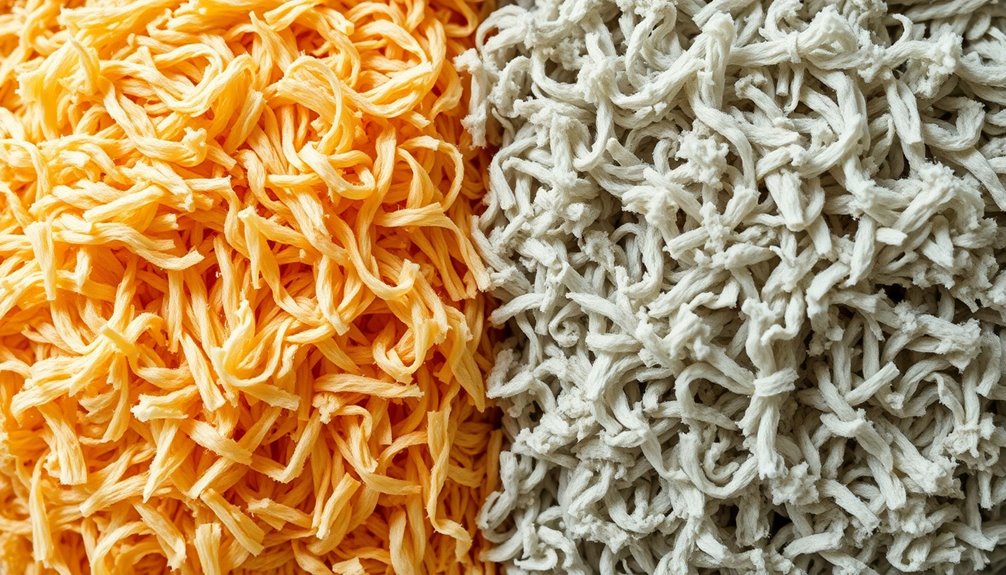
Understanding the differences between chemical and mechanical pulping can help you appreciate the qualities of the paper products you use every day. Chemical pulping involves breaking down lignin and separating cellulose fibers using chemicals like sodium hydroxide and sodium sulfide. This process results in higher quality and brighter paper. On the other hand, mechanical pulping grinds wood chips to separate fibers, which retains lignin, leading to darker, less strong paper with a higher yield of pulp.
Here's a quick comparison of the two methods:
| Method | Characteristics | Common Uses |
|---|---|---|
| Chemical Pulping | Breaks down lignin, creates chemical pulps, higher quality | Packaging materials (kraft process) |
| Mechanical Pulping | Retains lignin, less strong paper | Newsprint, lower-grade papers |
| Energy Consumption | Lower energy use | Higher energy use |
| Brightness | Can be bleached for bright finishes | Usually not bright |
The kraft process is widely used for producing strong, unbleached pulp, primarily in packaging materials. Understanding these distinctions can help you select the right paper for your needs.
Role of Recycled Materials
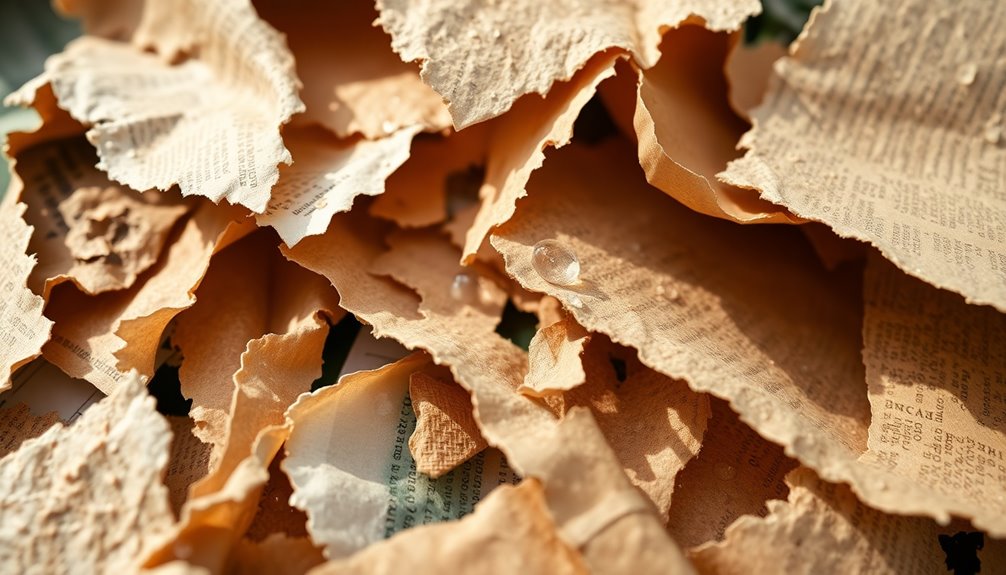
Recycled materials are at the heart of modern paper production, greatly enhancing sustainability efforts. By incorporating recycled content, you help reduce the environmental impact associated with traditional paper manufacturing. In fact, many papers now contain up to 100% recycled content, showcasing the shift towards a more sustainable model.
Here are three key benefits of using recycled materials in paper production:
- Resource Conservation: Using recycled fibers, especially from post-consumer waste, considerably cuts down the need for virgin fibers, conserving natural resources and lessening deforestation.
- Energy Efficiency: Recycling paper generally requires less energy than producing new fibers from raw materials, which lowers the overall energy consumption during manufacturing.
- Circular Economy Contribution: Incorporating recycled content fosters a circular economy, where materials are reused and repurposed, effectively decreasing overall paper waste that contributes to up to 40% of total waste in the U.S. annually.
Properties of Paper Fibers
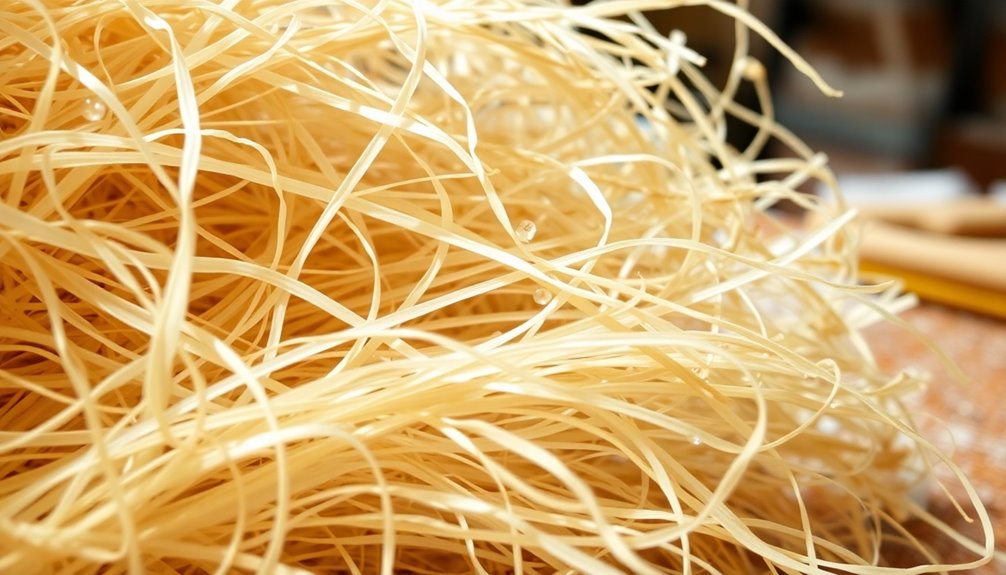
When you look at paper, notice that it's mainly made of cellulose fibers from plants like wood and cotton.
The strength and durability of the paper depend on the fiber type you choose, with longer fibers generally creating a sturdier product.
Understanding these properties helps you appreciate the quality and usability of different paper types.
Fiber Composition
Paper's strength and quality hinge on its fiber composition, primarily made up of cellulose fibers sourced from materials like wood, cotton, flax, and jute. Among these, wood is the most common source, with fibers ranging from softwoods, such as spruce and pine, to hardwoods like eucalyptus and birch. Each type greatly influences the mechanical properties of the final product.
When you consider what makes up paper, keep in mind these three key aspects of fiber composition:
- Fiber Length: The average fiber length in paper is slightly over one millimeter, allowing for better bonding and strength.
- Tensile Strength: Cellulose fibers contribute to the tensile strength of paper, ensuring it can withstand tension during various applications.
- Processing Methods: The choice between chemical methods and mechanical methods during fiber processing affects the final characteristics of the paper, including its color and printability.
Understanding the fiber composition helps you appreciate how different sources and processing techniques shape the paper's properties, ultimately determining its suitability for various uses.
Strength and Durability
Strength and durability in paper fibers largely stem from their cellulose content, which makes up about 40-50% of the fiber composition. This cellulose provides the tensile strength essential for paper's performance. Longer cellulose fibers improve this strength even further, as they interlock more effectively during the papermaking process, enhancing tear resistance and overall durability.
The thickness, or caliper, of the paper also plays a role in its strength. Generally, thicker papers, ranging from 0.07 to 0.18 millimeters, exhibit greater durability compared to their thinner counterparts.
Additionally, the method of pulping greatly impacts paper strength. Chemical pulping eliminates more lignin than mechanical pulping, resulting in stronger fibers and a brighter, smoother final product.
Moisture content is another critical factor; during production, it's typically reduced to 4-5%. This low moisture level helps enhance the mechanical properties and overall integrity of the paper.
Environmental Considerations

How does the paper industry impact our environment? The pulp and paper sector is a significant contributor to global greenhouse gas emissions, with paper consumption skyrocketing by 400% in the last 40 years.
This growth leads to substantial resource depletion and waste generation, as about 35% of harvested trees go toward paper production, resulting in 71.6 million tons of paper waste annually in the U.S.
To address these issues, consider the following environmental aspects:
- Sustainable Forestry Practices: Implementing responsible forestry management through certification programs like FSC can help mitigate deforestation and habitat loss.
- Recycling Initiatives: Recycling paper drastically cuts down energy consumption and greenhouse gas emissions tied to production. This makes recycling a crucial part of sustainability efforts.
- Resource Management: Conducting life cycle assessments allows us to evaluate the environmental impacts of paper products, guiding improvements in sustainability and resource management. Additionally, incorporating sustainable practices in various industries can further reduce environmental degradation and promote healthier ecosystems.
Innovations in Paper Manufacturing
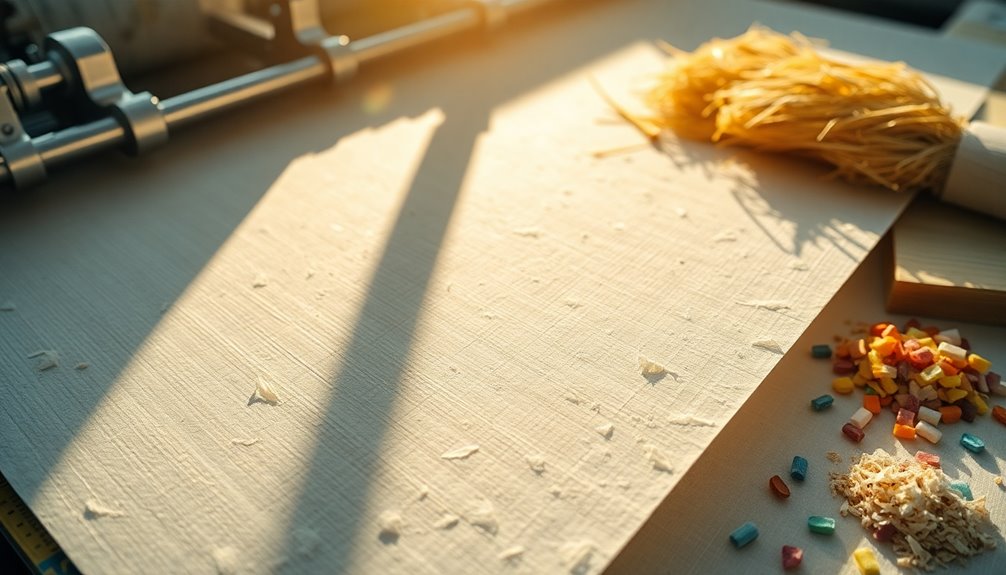
The paper manufacturing industry is undergoing a remarkable transformation driven by innovative technologies and sustainable practices. You'll find that these advancements focus on creating biodegradable alternatives, like PaperFoam, which offer effective sustainable packaging solutions while considerably reducing environmental impact.
Digital technologies have enhanced traceability systems, allowing companies to manage raw materials better and comply with sustainability standards.
Recent developments in coating techniques have improved the surface properties of paper, making it suitable for high-quality printing while using fewer raw materials. This is particularly beneficial for the e-commerce sector, which demands lighter and thinner papers without sacrificing strength.
Moreover, the use of nanotechnology is emerging, enabling the production of papers with enhanced mechanical properties and functionalities. You'll notice these innovations lead to products that aren't only water-resistant but also possess antimicrobial characteristics, catering to modern needs.
With these advancements, the paper industry isn't just adapting but thriving, ensuring that it meets consumer demands while prioritizing environmental sustainability. The future of paper manufacturing looks promising as it embraces efficiency and eco-friendliness, shaping a greener world.
Future Trends in Paper Production

Sustainability is set to dominate the future of paper production, with manufacturers increasingly turning to recycled materials and alternative fibers to lessen their environmental footprint.
As you navigate this evolving landscape, you'll notice several key trends shaping the industry:
1. Biodegradable Packaging: Innovations like PaperFoam are gaining traction, catering to consumers' demand for eco-friendly options amidst climate change concerns.
2. Digital Technologies: These advancements enhance traceability in the paper supply chain, allowing you to monitor sourcing and production practices more effectively.
This transparency boosts confidence in sustainable choices.
3. Coating Technologies: Improved coating methods are enhancing the printability and durability of paper products.
This means that even specialty papers can now meet the diverse needs of various industries while maintaining a focus on sustainability.
As demand shifts from graphic paper to specialty papers, driven largely by the rise of e-commerce, it's clear that the paper industry is adapting.
Frequently Asked Questions
What Are the Ingredients in Paper?
When you think about the ingredients in paper, you might imagine a mix of fibers.
Typically, wood pulp from trees like spruce or pine forms the base. You might also find fibers from cotton or flax, especially in high-quality papers.
Additives can enhance paper's durability and appearance. Plus, many papers incorporate recycled fibers, which not only help the environment but also provide a unique texture.
What Element Is Paper Mostly Made Of?
When you think about what element paper's mostly made of, consider carbon.
This essential element forms the backbone of cellulose fibers, which are the primary components of paper. Since cellulose is a carbohydrate polymer composed of carbon, hydrogen, and oxygen, carbon plays a vital role in giving paper its structure.
Is Paper Still Made From Trees?
Yes, paper's still primarily made from trees.
When you think about it, a significant portion of paper production relies on cellulose fibers sourced from softwoods and hardwoods.
While there are alternatives like cotton and jute for specialty papers, the industry heavily depends on forestry products.
It's vital to support sustainable practices, ensuring that more trees are planted than cut down, helping to lessen the environmental impact of paper manufacturing.
What Was Paper Originally Made Of?
When you think about the origins of paper, it's fascinating to realize it was originally made from various plant fibers.
Early forms used materials like hemp, linen, and cotton rags. You can imagine how these fibers were pulped together to create the first sheets in China around the 2nd century.
It's impressive how Cai Lun refined this process, blending tree bark and other fibers to make writing and documentation more accessible.
Conclusion
To sum up, understanding what paper's made of helps you appreciate its journey from raw materials to finished products. Whether it's crafted from wood fibers or recycled materials, each type plays a role in the paper's properties and sustainability. As innovations continue to emerge, the future of paper production looks promising, balancing functionality with environmental responsibility. So next time you pick up a sheet, remember the fascinating processes and materials that brought it to life!

